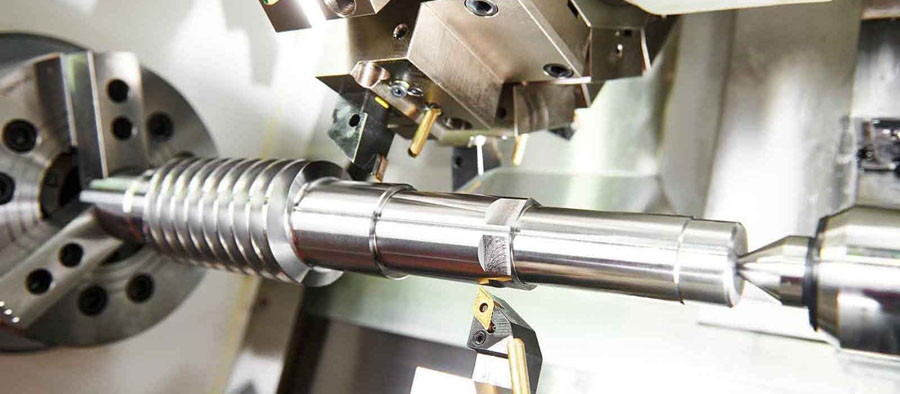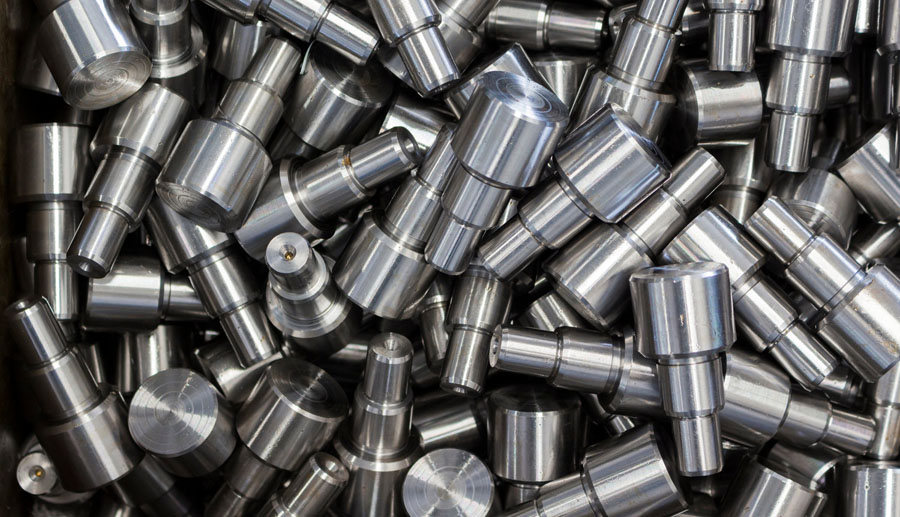Shaft parts are a common type of parts. Its structure is a rotating body, and its length is generally greater than its diameter. It is widely used in various mechanical equipment to support transmission components, transmit torque and bear loads. The machining of shaft parts must follow certain rules. You can learn about the specific processing steps and some problems that need attention through this article.
1. The Basic Processing Route Of Shaft Parts
The main processing surface of shaft parts is the outer surface and the common special-shaped surface. Therefore, the most suitable processing method should be selected according to various accuracy levels and surface roughness requirements. The basic processing routes can be summarized into four.
The first is the machining route from rough turning to semi-finish turning, and then to finishing turning. This is also the most important process route selected for the outer circle machining of shaft parts of common materials; the second is from rough turning to semi-finishing turning. Then to rough grinding, and finally adopt the processing route of fine grinding. For ferrous metal materials and precision requirements, the surface roughness requirements are small and the parts that need to be hardened, this processing route is the best choice, because grinding is The most ideal follow-up processing procedure; the third route is from rough turning to semi-finishing turning, then finishing turning and diamond turning. This processing route is specially used to process non-ferrous metal materials, because non-ferrous metals have low hardness and are easy to block. The gap between the sand grains is usually not easy to obtain the required surface roughness by grinding, and it is necessary to use fine turning and diamond turning procedures; the last processing route is from rough turning to semi-finishing turning, to rough grinding and fine grinding , Finishing processing is carried out at last. This route is a kind of processing route that is often used for parts that have been hardened for ferrous metal materials, and require higher precision and lower surface roughness values.

2. Pre-machining Of Shaft Parts
Before turning the outer circle of shaft parts, some preparation processes must be carried out. This is the pre-machining process of shaft parts. The most important preparation process is straightening. Because the workpiece blank is often bent and deformed during the manufacturing, transportation and storage process. In order to ensure reliable clamping and uniform distribution of machining allowance, in cold state, various presses or straightening machines are used for straightening.
3. Positioning Datum For Machining Shaft Parts
First, the center hole of the workpiece is used as the positioning reference for machining.
In the processing of shaft parts, the coaxiality of the outer surface, the tapered hole, and the threaded surface, and the perpendicularity of the end face to the axis of rotation are important manifestations of position accuracy. These surfaces are generally based on the centerline of the shaft as the design reference, and the center hole is used for positioning, which conforms to the principle of reference overlap. The center hole is not only the positioning datum during turning, but also the positioning datum and inspection datum for other processing procedures, which conforms to the principle of unification of datums. When two center holes are used for positioning, multiple outer circles and end faces can be processed in one clamping to the maximum.
Secondly, the outer circle and the center hole are used as the positioning reference for machining.
This method effectively overcomes the shortcomings of poor positioning rigidity of the center hole, especially when processing heavier workpieces, the positioning of the center hole will cause unstable clamping, and the cutting amount cannot be too large. There is no need to worry about this problem if the outer circle and the center hole are used as the positioning reference. When roughing, the method of using the outer surface of the shaft and a center hole as the positioning reference can withstand a large cutting torque during processing, which is the most common positioning method for shaft parts.

The third is to use the two outer circular surfaces as the positioning reference for machining.
When processing the inner hole of a hollow shaft, the center hole cannot be used as the positioning reference, so the two outer circular surfaces of the shaft should be used as the positioning reference. When machining the main shaft of a machine tool, the two supporting journals are often used as the positioning reference, which can effectively ensure the coaxiality requirements of the tapered hole relative to the supporting journal and eliminate errors caused by the reference misalignment.
Finally, the taper plug with the center hole is used as the positioning reference for processing.
This method is most commonly used in the outer surface machining of hollow shafts.
4. Clamping Of Shaft Parts
The processing of the taper plug and the taper sleeve mandrel must have high machining accuracy. The center hole is not only the positioning reference made by itself, but also the benchmark for finishing the outer circle of the hollow shaft. The tapered surface of the taper plug or the taper sleeve mandrel must be ensured. It has a high coaxiality with the center hole. Therefore, when choosing the clamping method, attention should be paid to minimize the number of installation times of the cone plug, thereby reducing the repeated installation error of the parts. In actual production, after the taper plug is installed, generally speaking, it will not be removed or replaced in the middle of processing until the processing is completed.


